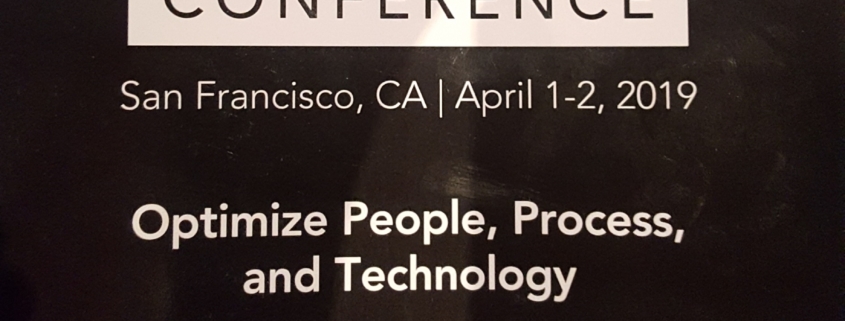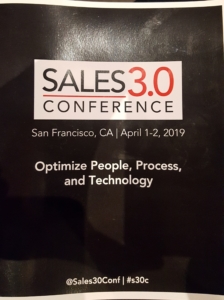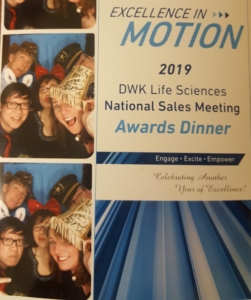 For years, selling focused on making enthusiastic, detailed presentations. To that end, product knowledge was key. Companies invested heavily in teaching their salespeople product knowledge at the expense of selling skills. Even today, it’s estimated that roughly 80% of the training salespeople receive is about product knowledge. Clearly, sales skills training has taken a back seat to. But at what cost?
For years, selling focused on making enthusiastic, detailed presentations. To that end, product knowledge was key. Companies invested heavily in teaching their salespeople product knowledge at the expense of selling skills. Even today, it’s estimated that roughly 80% of the training salespeople receive is about product knowledge. Clearly, sales skills training has taken a back seat to. But at what cost?
Why the product-first focus fails
Here’s a typical scenario that results from this kind of approach: XZY Software has brought their entire sales force to corporate headquarters for three days of intensive product training on the latest version of their software. The salespeople are shown how to demo the product, and they’re taught all the features, specifications, applications and more. At the end of the three days, they’re product experts.
Imagine what’s likely to happen on the first sales call they make after training. Unless the prospect beats them to the point by asking about new software features, the salesperson will likely to lead with, “Let me tell you about our newest release. It’s got (feature A, feature B and feature C), and here’s how it can help you solve (problem A, problem B and problem C).”
The prospect doesn’t even get a chance to talk about their needs. The focus on teaching product knowledge takes the focus off qualifying and asking questions. And this kind of “premature presentation” will hurt you more than it will help you, as it turns prospects off but also backfires.
When a features focus backfires
When skills training was considered necessary, salespeople learned ways to overcome objections and close deals for a very good reason: Product pushers who overwhelmed prospects with features and benefits desperately needed those skills. However, there’s a flaw in pushing features and benefits that’s often overlooked: Sales pitches sometimes give prospects ammunition they can use for objections. For example, if the salesperson starts discussing features, specifications or pricing, the prospect can find something that compares unfavorably to the product he or she is currently using.
On the other hand, if the salesperson limits the amount of information given, it’s more difficult for the prospect to find something to object to. Plus this leads to question-asking, not feature-pushing, when the salesperson pulls back and withholds information to focus on learning information instead. Investigative skills are more important than presentation skills in today’s selling environment that rewards the problem solver, not the product pusher.
Sales should not be adversarial
Another misunderstanding is that the entire selling process has to be adversarial. Both parties seem to think they must gain the upper hand and not let the other take advantage of them. Feeling you have been taken advantage of leads to resentment and possible retribution at some point in the future. This is not a good foundation for a long-term business relationship. Years and years of manipulation by both parties have caused this unfortunate imbalance in the typical sales process.
Sales should result in a win-win
Selling has to become a cooperative effort. When a sale is made, both parties must win or they shouldn’t do business together. To make this happen, the salesperson should start out by communicating the need to exchange enough information to find out if there is a reason to start a business relationship. If after exchanging information it doesn’t look like a fit, either party has the right to disengage.
The focus of qualifying should be for the salesperson to ask questions about the business objectives the prospect wants to achieve, not on what the seller has to offer. At the end of the process, the seller will make his or her recommendations based on the answers to the qualifying questions and the prospect will give the seller a decision. No manipulation will be necessary by either party to gain an advantage.
And we can finally say goodbye to product-focused presentations all about features and benefits too.

 Value proposition is a phrase that became ubiquitous during the 90’s dot.com (dot bomb?) era. You may still encounter this, or the “value messaging” term on a regular basis in the business world. Buzz word or not, value messaging will help quickly convey the value of your product or service without overwhelming or boring potential customers away in a landslide of features and benefits dumping.
Value proposition is a phrase that became ubiquitous during the 90’s dot.com (dot bomb?) era. You may still encounter this, or the “value messaging” term on a regular basis in the business world. Buzz word or not, value messaging will help quickly convey the value of your product or service without overwhelming or boring potential customers away in a landslide of features and benefits dumping.


 Why You Should Use Those Buyer Personas You’ve Been Avoiding
Why You Should Use Those Buyer Personas You’ve Been Avoiding

